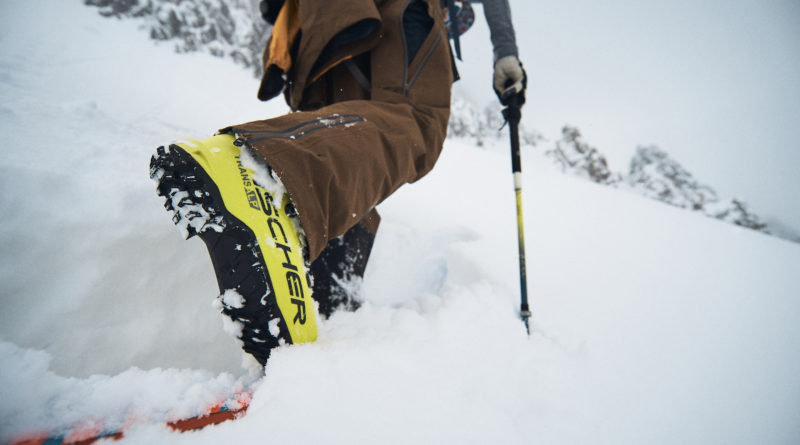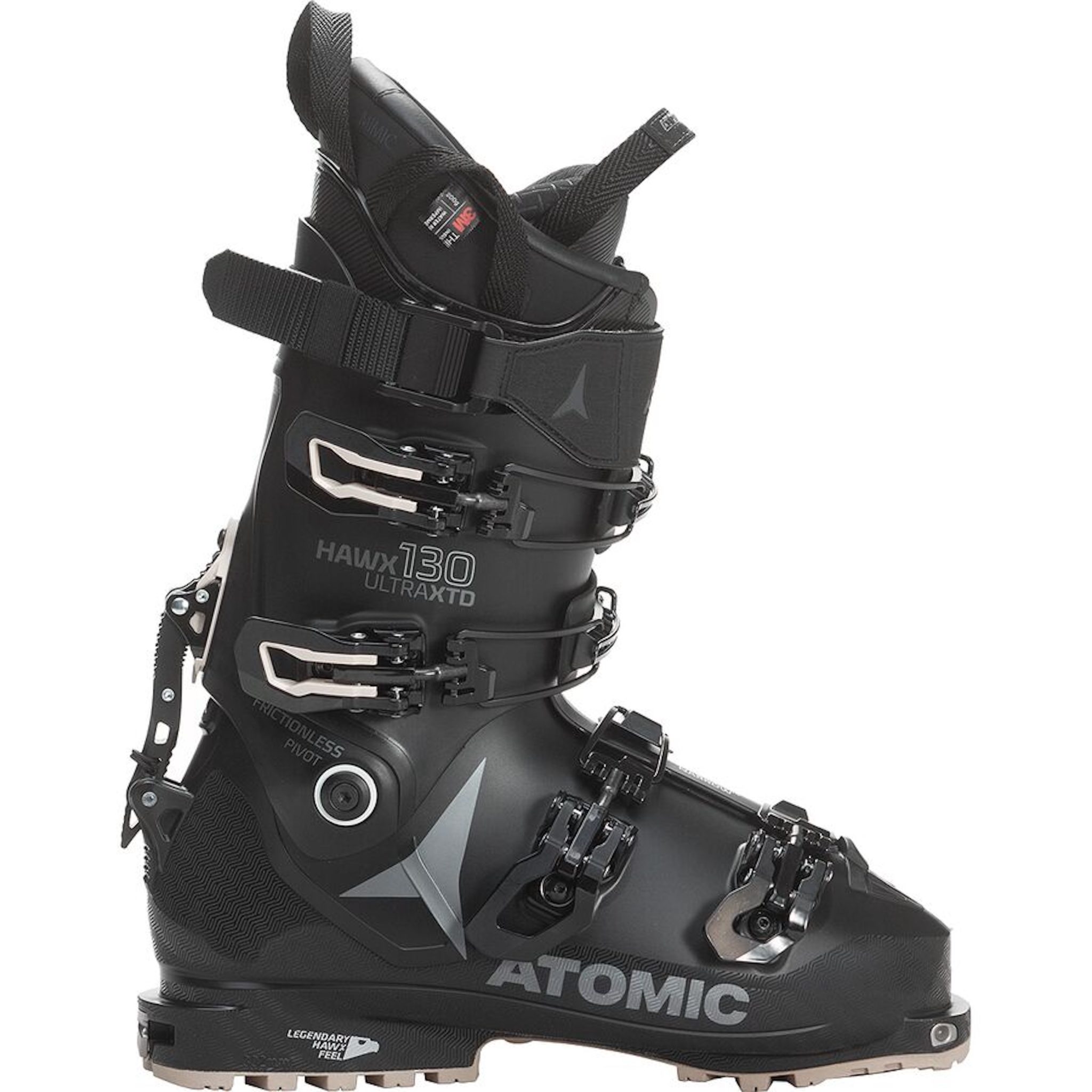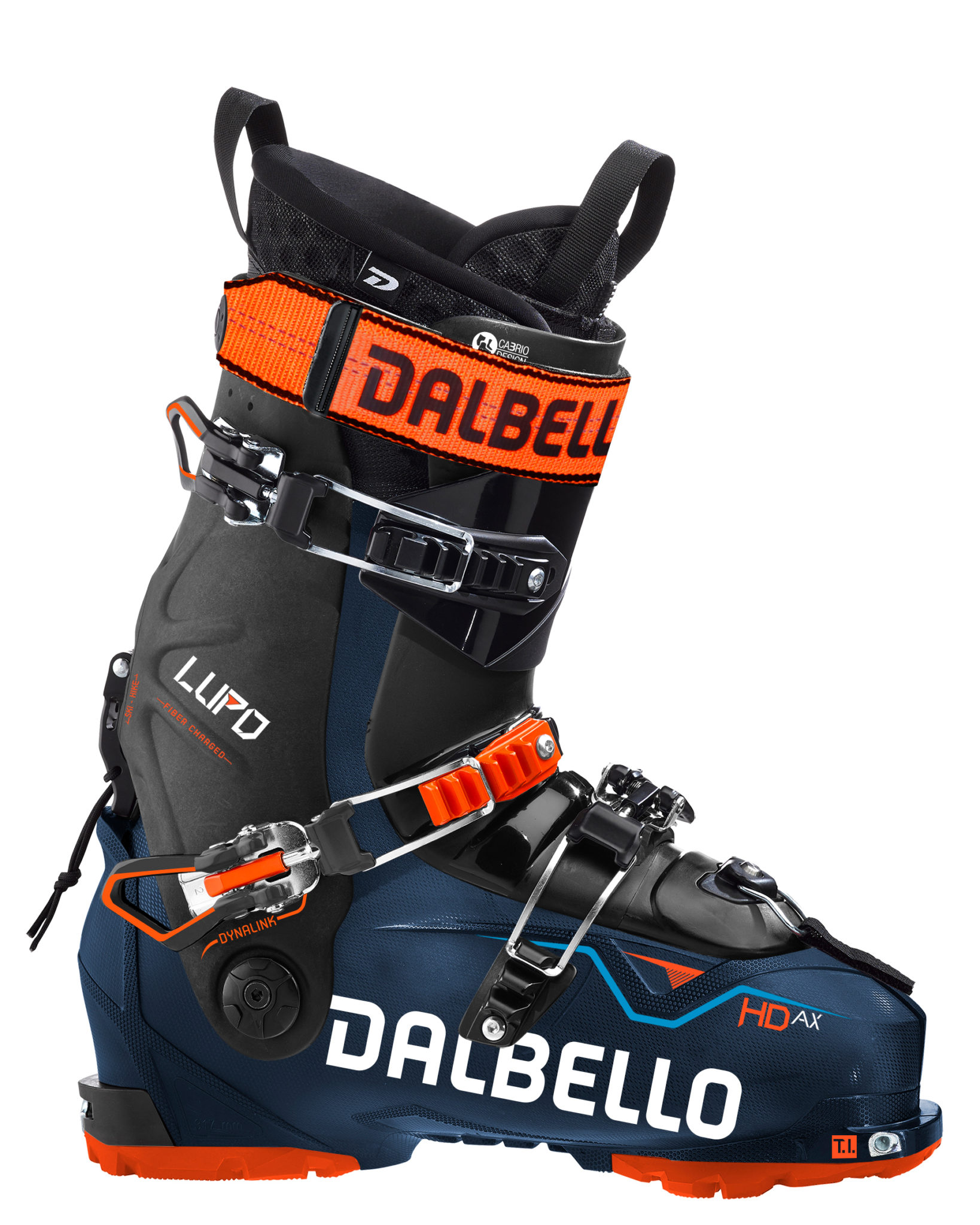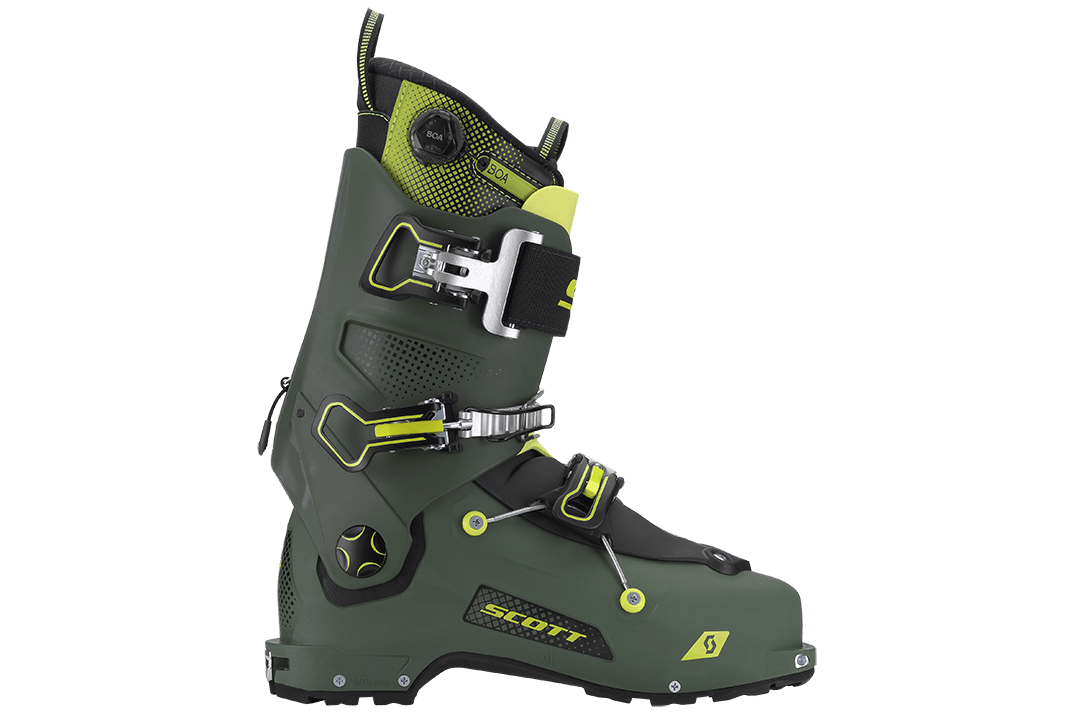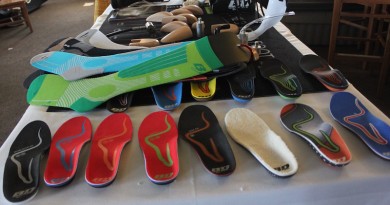The New All-Mountain Boots
By Mark Elling
The true backcountry boot is an out-of-bounds animal—lightweight and built for ascending with a maximum range of motion in touring mode and comfortable for uphill travel. The boot, of course, has tech binding compatibility and a fully-rockered and aggressively-lugged outsole for walking and scrambling as needed, ostensibly on mountain ridges and rough terrain.
Beyond that, there’s as wide a range of touring boots as there are skis. Increasingly, though, boot manufacturers are focusing on that sweet spot: the all-mountain touring boot that could be your quiver-of-one if, say, you spend more than half of your time on the mountain but also want to skin up to ski some backcountry. Even Lange, long the favorite of Eastern ski racers, has come out with a boot for this season that is its first true AT/All-Mountain boot.
The 2021-22 “All-Mountain” boots continue to look and act more and more like alpine ski boots. They hold on the groomers yet have the range of motion, rockered sole and light weight that will get you up skinning up Brandon Gap or Tuckerman Ravine comfortably—and in time for first tracks.
What makes this type of boot especially good for Vermont —or most anywhere in the East— is that here the uphills are often short and steep and your downhills are either technical scrambles through trees and pucker brush or precise turns on the icy, rocky, technical terrain of Mt. Washington.
These new touring boots – we call them All Mountain— have the classic stiffness of alpine boots that will let you ski trees like they were race gates. But they also boast the comfort, light weight and versatility of a touring boot.
Shon Racicot, owner of The Boot Pro Ski Shop in Ludlow, has been fitting ski boots and selling ski equipment since 1987. His shop at the base of the Okemo Access Road is a go-to place for alpine touring gear and he’s seen a significant increase in sales of AT equipment in the last few years, especially in boots.
“The new AT boots have come a long way and we are starting to see the downhill performance you might get with an alpine boot,” notes Racicot – who adds the disclaimer that he uses two boots: one for touring one for resort skiing, “because I’m at heart a racer and still like the precision of an alpine boot and being able to crank out the turns on the groomers,” he says.
“But these new boots with liners and shells that can be molded are much easier to fit than the AT boots of the past. The use of new liner materials have also made boots warmer. And manufacturers have started producing boots in wider lasts which makes the fit more comfortable for a variety of foot shapes,” he says. He points to the Atomic Hawx Ultra Xtd 130 as one boot that even has a heat-moldable shell and a 98 mm last that can fit narrower feet.
“Plus, with walk modes and rockered Vibram soles, if you’re walking around the lodge and you won’t skid out on your way to the bathroom,” Shon says with a laugh.
The boots noted here are just some of the best of the new breed and represent the top line boot, but many come in a variety of flexes and also have similar women’s models.
“You may not want or need a 130 flex,” says Racicot. “And what’s a 130 in one boot in this category definitely is not in another so it’s important to try them on. The best boot is the one you are comfortable in,” says Racicot. “Getting a good fit in an AT boot is even more important because on the uphill, you are pushing the boot away from you. You may not want the shell as tight as an alpine boot because your toe is going to reach for the front of the boot in the throw.“
Also note that most of these boots are compatible with newer alpine bindings but check to make sure they will work with your binding set up (pin or tech bindings, MNC, GripWalk, Shift, etc.) before you plan to click into your favorite pair or AT or frontside skis.
Last spring, Mark Elling and his team at America’s Best Bootfitters were able to get out on five of these (the Fischer, Lange, Scarpa, Scott and Tecnica) and their impressions are noted here.
Don’t wait until the snow falls to shop as many of these boots will sell out in the early season and you will want to make sure you’ve broken them in before the first big powder day.
ATOMIC HAWX ULTRA XTD 130
Last width: 98 mm | Flex Index: 130 | Weight: 1580 g.| Price: $799.95
At first glance, Atomic’s stiffest alpine touring boot looks just like a standard four-buckle bad-ass alpine boot. And it offers the tight fit that alpine racers look for thanks to a 98 mm last, heat-moldable shell (yes, even the shell is heat-moldable!) and liner. Lock down the Free/Lock 2.0 walk lever, cinch up the power strap and it promises you will be ready to rip hard snow, as well as the soft stuff. With a sole that will work with tech, frame, MNC, Grip Walk-compatible alpine bindings and a 54 degree range of motion, this is a boot you can easily wear from the frontside of the mountain to the backside. While we were not able to test this boot, Shon Racicot of Boot Pro gives it high marks all around.
DALBELLO LUPO AX HD
Last width: 100 mm | Flex Index: 120 | Weight: 1960 g. | Price: $599.95
While it might be a little heavier than its brethren in this category, the Dalbello Lupo AX HD is a beefy, three-piece boot for strong skiers that gives you a few key options to tune it for alpine touring too. A removable tongue gives it one of the widest ranges of motion – 67 degrees —in this category. Pull it out if you’re doing a tour with little downhill and you can also save 125 grams. Thanks to the Dynalink buckle that crosses the ankle area far lower on the cuff than on most boots, your feet will still feel locked in. At $599.95, this is a great boot if you are getting started in the backcountry touring game and don’t mind taking the tongue in and out during transitions. Plus, with a 100 mm last, heat-moldable liner and a wide-profile cuff closure, it has a forgiving and versatile fit. All Lupo models are compatible with GripWalk and ISO 9523 Alpine Touring bindings, thanks to tech inserts. By swapping out the rockered soles for alpine soles the boots can also fit in all alpine bindings as well but are not certified ISO 5355.
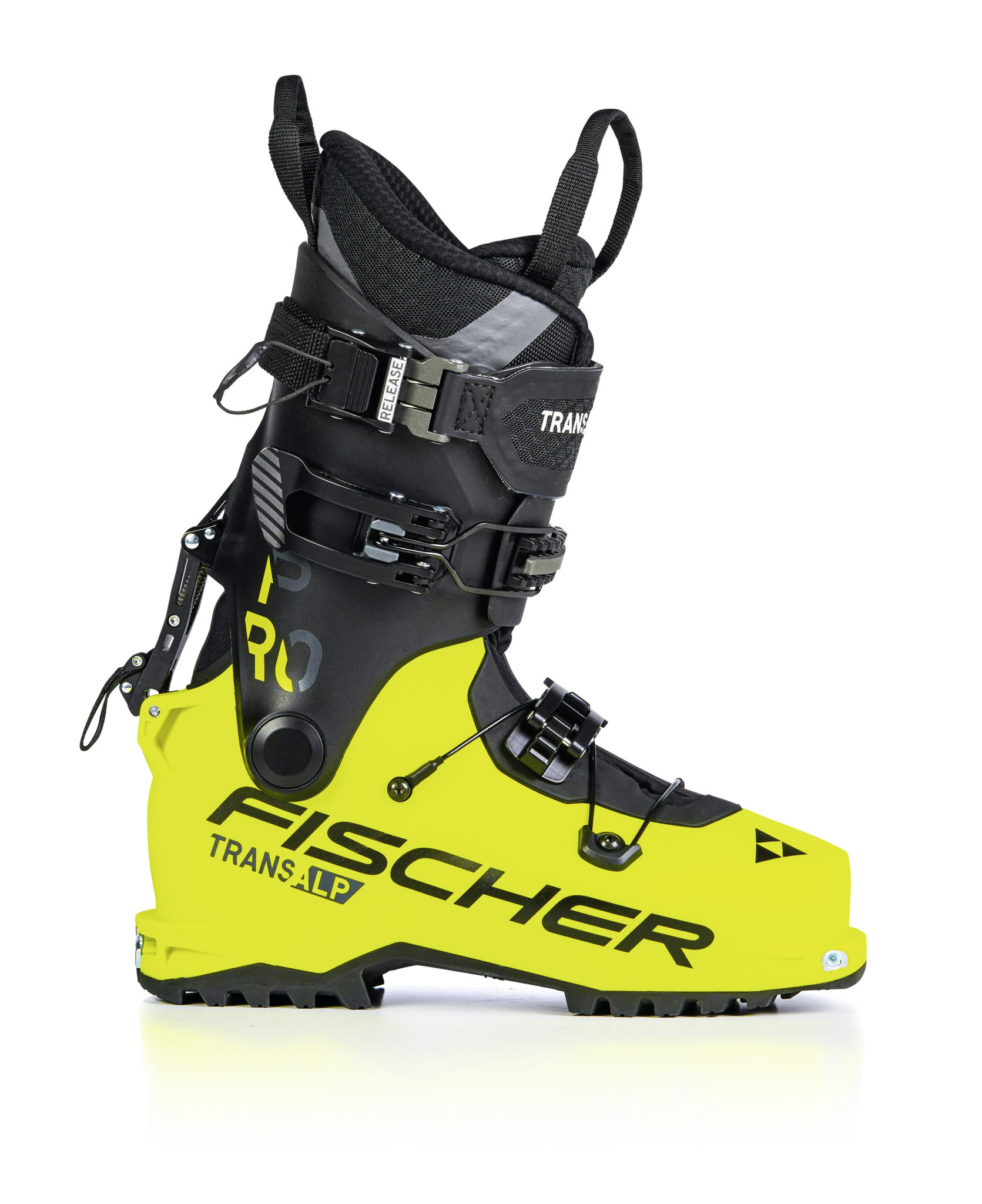 FISCHER Transalp Pro
FISCHER Transalp Pro
Last width: 94 mm | Flex Index: 120 | Weight: 1280 g. | Price: $850
Super-light, with a narrow last, a lace-up liner and a single power buckle system, the Transalp Pro showcases its mountaineering heritage but delivers surprising performance on the downhill. It looks minimalistic but with an eye toward design this boot is like a piece of anatomical sculpture. It’s technical (look at the mechanical advantage buckles) but simple in that all the elements contribute to a functional up or down. Elling’s testers were shocked at how strongly this light little boot skied. As one wrote “Somehow this little bugger can put a fat ski on edge and drive it through whatever is in its path. It was accurate in its steering and responsive to both minute and substantial edging movements.” A couple of testers put it head-to-head (one brand on the left foot, the other on the right foot) against the more alpine power-centric Lange XT3 Tour Pro and both said that if they had their eyes closed, they couldn’t have known which one was which. The touring capability was fantastic here, with a light feel on the foot and a long range of motion of nearly 80 degrees. The boot is compatible with tech and MNC bindings.
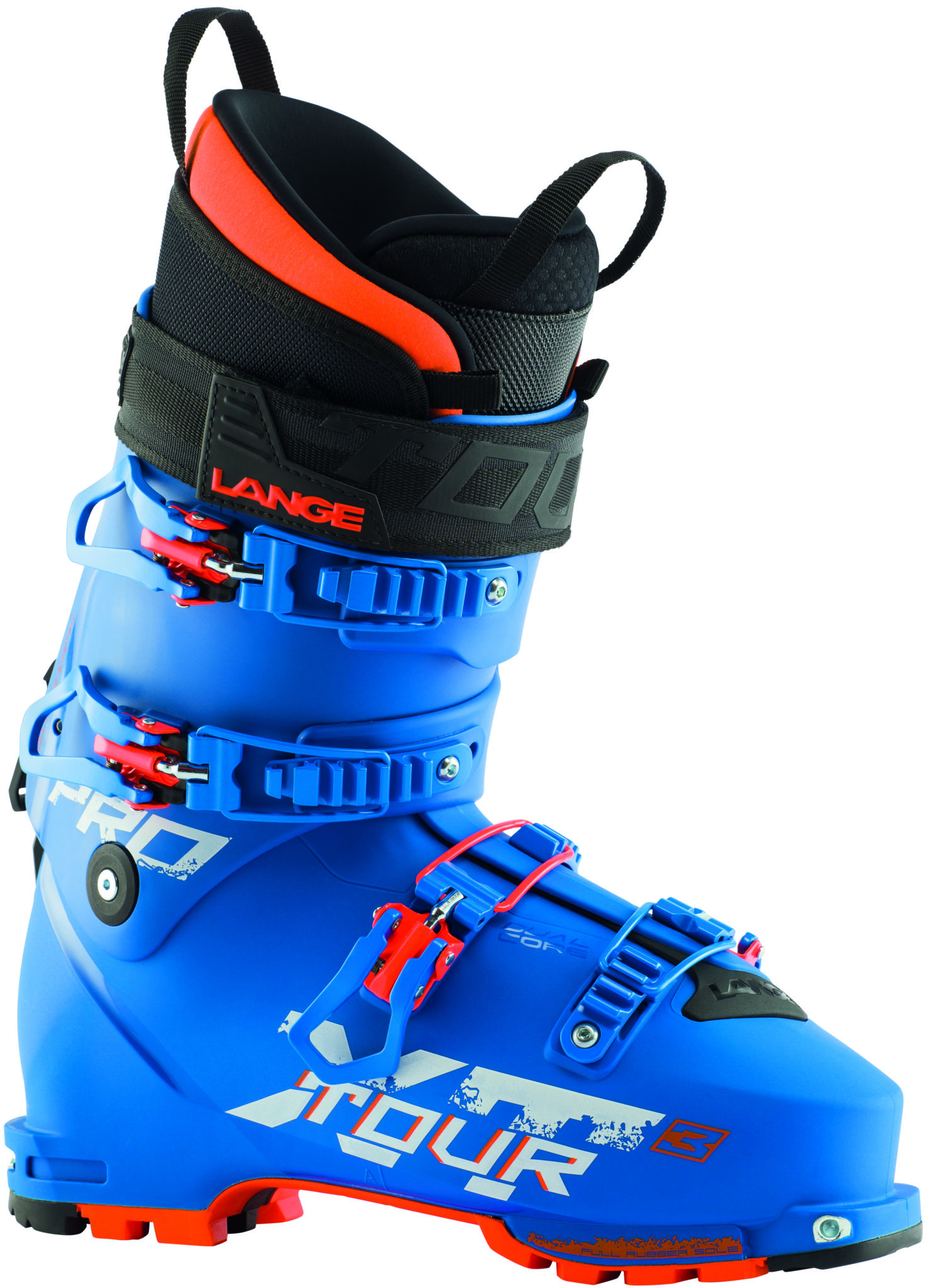 LANGE XT3 Tour Pro 2021-2022
LANGE XT3 Tour Pro 2021-2022
Last width: 99 | Flex Index: 130 | Weight: 1520 g. | Price: $950
This is Lange’s first foray into the true backcountry boot category, with a fully-rockered Vibram ISO 9523 sole and a lightweight full-thermo EVA liner. This looks an awful lot like a classic Lange four-buckle alpine boot but it’s light enough to pass in the BC group and its 53-degree range of motion in touring mode fits right in with the category’s best. The best part? The XT3 still skis with all the performance of a 130-flex Lange. Very few boots fit the human foot and leg properly, allow a long and natural stride with minimal weight and then manage to crush the downhill—this is one of those few. The XT3 Tour Pro is compatible with 9523 touring bindings, such as MNC and tech bindings.
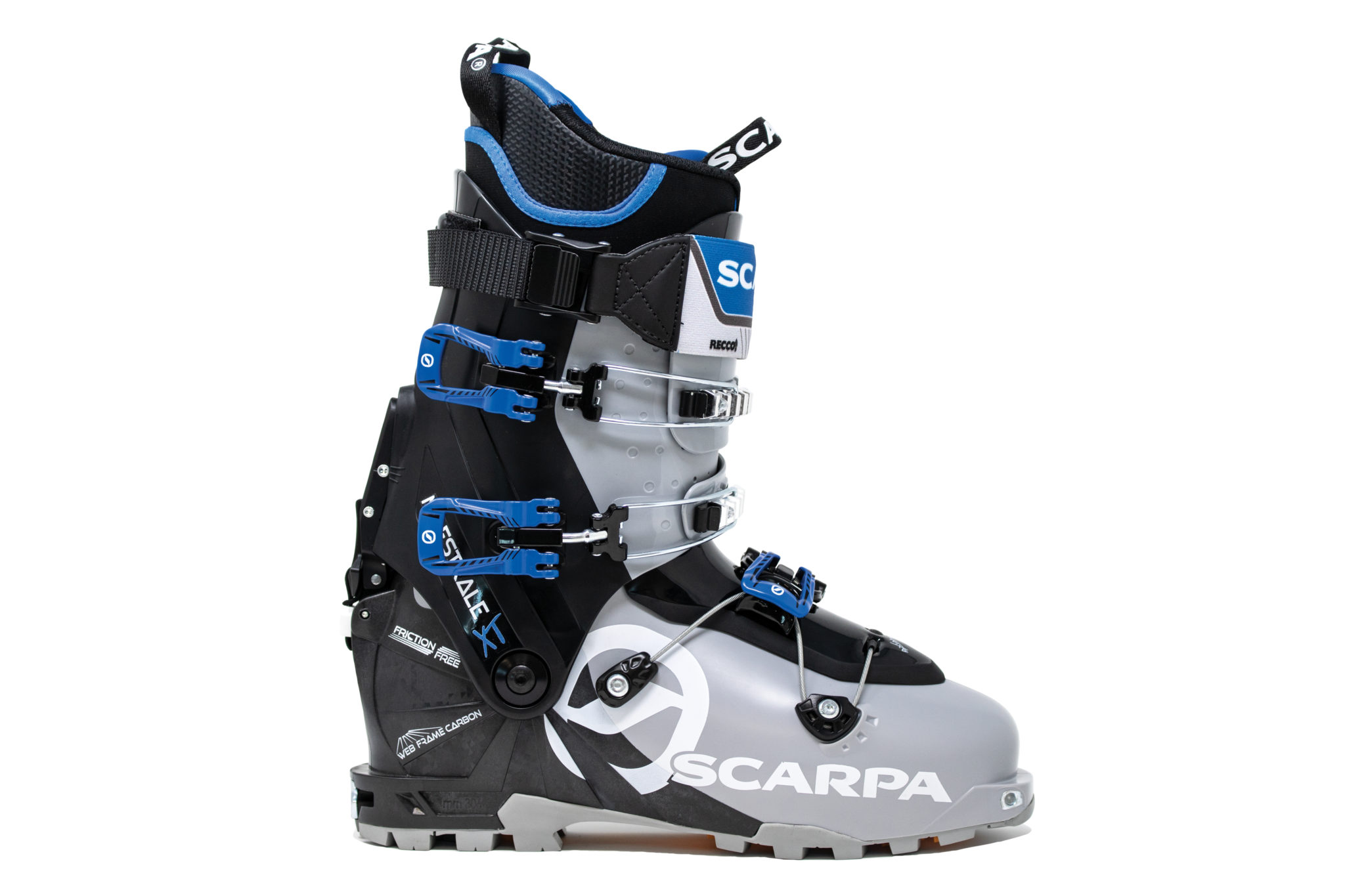 SCARPA Maestrale XT
SCARPA Maestrale XT
Last width: 101 | Flex Index: 130 | Weight: 1490 g. | Price: $895
When Mark Elling asked his testers to describe the Maestrale XT in as few words as possible, he got several different answers that all said something like: fits right, skis strong. The XT’s light weight and touring range of motion (56 degrees) are top shelf —and it embeds a RECCO reflector in the touring strap. But even the most descent-centric in our group of bootfitter testers loved this boot—they say it fits like a boot should and skis like a boot should, and all that functional uphill stuff is icing on the cake. The XT is strong to the edge, but not to the point of locking the ski into a hard carve when not desired. Testers said the fine tuning was there, as was the quickness of response in tight spots, but they were most impressed with how much stability and power was transferred to the ski edge at high speeds and on hard snow. While the intent may not be to ride the chair often with this boot, it would handle anything area skiing might throw at it so long as the tech binding of choice was up to the task. For hard-charging or heavier and taller skiers looking for a true BC boot that rips, this is the one—the XT crushes its little bro Maestrale RS at the top end of skiing performance requirements. It is compatible with tech and AT bindings.
SCOTT Freeguide Carbon
Last width: 101 | Flex Index: 130 | Weight: 1490 g. | Price: $900
With the catchy name evolution of the former Superguide to the all-new Freeguide Carbon testers were hopeful that it came with more than new badging, and they were not disappointed. The Freeguide is one of the better BC boots we’ve tested in years for its well-rounded blend of fit and performance, both up and down. Testers say it’s a tricky one to get on but well worth the effort. “We’re generally not fans of pulley-style Velcro buckle-power-strap combination closure systems, but this one works, and in conjunction with the Boa liner lacing system produces a comfy clamp on the lower leg for serious ski tipping leverage,” they said. Testers liked the relaxed stance angles that allowed for maximum touring efficiency but without locking them straight out of a dynamic position when needed on descent. Range of motion is about 60 degrees. The carbon powered lower shell, while more difficult to custom fit, provides a crisp feel underfoot, that paired with a Grilamid and carbon upper boot managed to avoid feeling twitchy. Cuff rotation was in line with the best of the category and the boot feels light on the foot without feeling flimsy. Compatible with tech and MNC bindings.
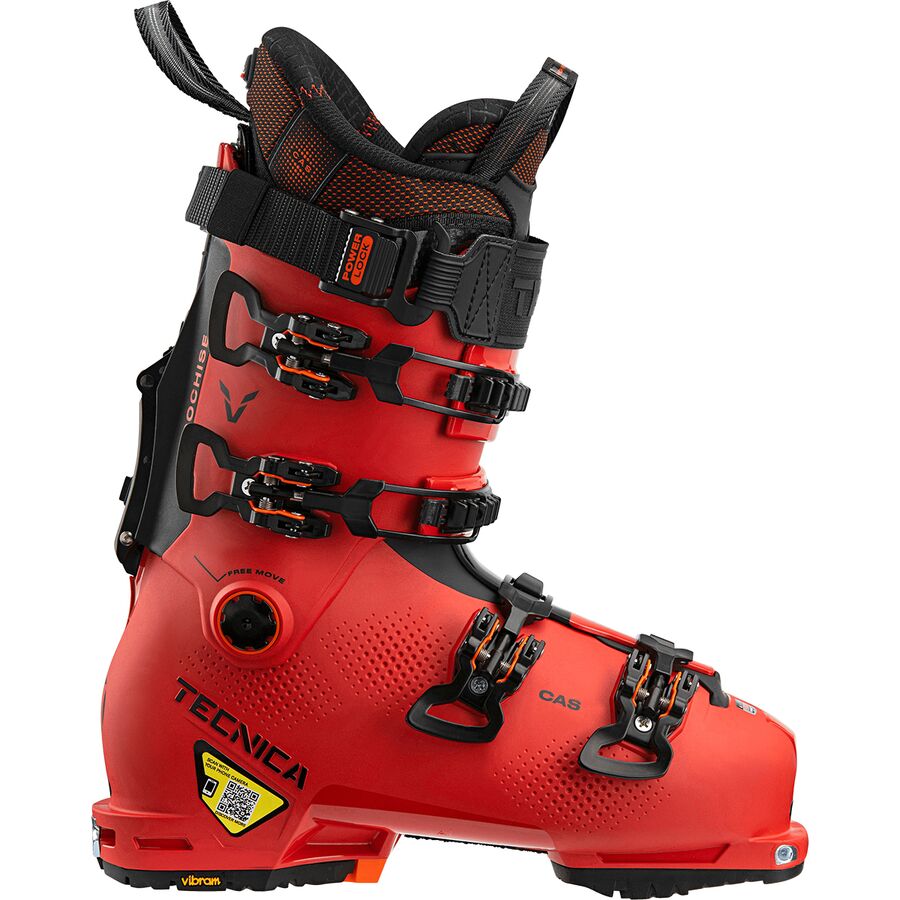 TECNICA COCHISE 130
TECNICA COCHISE 130
Last width: 99 | Flex Ondex: 130 | Weight: 1824 g. | Price: $900
Tecnica helped kick off this whole trend in 2010 when Arne Backstrom, one of Tecnica’s pro skiers, added tech inserts to his race boots. The Cochise 130 was the end result and Tecnica. It became one of the very best alpine touring/freeride boots on the market and Tecnica had little to gain by changing it. So, what did they do this year? Changed the whole damn thing… shell, liner, cuff release mechanism, new Vibram soles…all of it. The medial side of the shell is thickened to provide more power to the inside edge and the new T-Drive style cuff release mechanism is more rigidly designed and also locks out to avoid a premature release. Tecnica must have puffed out a big sigh of relief when everybody absolutely loved it. Elling’s testers sure did. “This year’s Cochise skied stronger—nicely done for a boot with a hinge.” It’s a bit lighter but still a beefy boot that is more frontside than backside. But it has a better fit, better hiking range-of-motion (50 degrees), better gizmos. Compatible with GripWalk and tech bindings.
Mark Elling is a full-time professional bootfitter at Mt. Bachelor, OR; Educational Director at the Masterfit University Bootfitter Training centers (MasterfitUniversity.com), director of the America’s Best Bootfitters test program (Bootfitters.com), author of The All-Mountain Skier: The Way to Expert Skiing, and a level III PSIA Alpine instructor. Additional reporting by Lisa Lynn.

